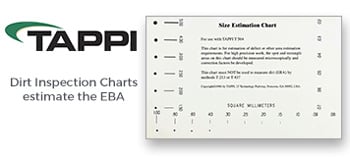|
TRENDS AND IDEAS
Museum Exhibit Showcases the Art of the Paper Plate. The ordinary
Dixie(R) paper plate has found a new home this month in a surprising locale
-- New York’s Museum of Arts & Design, New York, USA. Fashion designer
Nicole Miller, chef Jacques Pepin, talk show host Sally Jessy Raphael,
and jewelry designer Angela Cummings are among the artists whose paper
plate creations will be on display at the Museum May 2 - June 8. The Dixie
Art of the Plate exhibition celebrates more than 100 of the best entries
from nearly 9,000 submitted by artists around the world in the design
competition.
Transforming the everyday paper plate into a work of art pay off, too,
with US$ 50,000 in cash prizes awarded. The opening of this special exhibit
will include a silent auction of celebrity-designed plates, with proceeds
benefiting the arts. Brian Winters, of Concord, Massachusetts, a model
maker for an established toy company, will be awarded $10,000 for his
entry, "Fusion Plate," a modular design for sushi-lovers. A
perfect mix of form and function, the plate is complete with a removable
section for small appetizers. And, the various shades of green nicely
complement the colors of most sushi selections.
According to Dixie President Bill Shultz, "These imaginative designers
inspire and challenge us to bring new designs to life. As the leader in
disposable dishware, Dixie is proud to cultivate creativity, and we will
continue to bring innovation to our business."
Research evaluates the changing process mix in printing and
packaging. TrendWatch Graphic Arts (TWGA) today released
an in-depth new report analyzing the printing and packaging industries
by dissecting the usage of inks and toners. The report includes market
share data for key commercial printing industry segments, such as inplants,
commercial printers, heatset and nonheatset, duplicator, and newspaper
markets, and uses inks and toners to identify critical trends in the printing
and packaging industry. For example, trend analysis indicates that while
the overall number of printing firms is declining, the percentage of larger
printing companies (20+ employees) continues to be on the rise across
the board. And while larger printing firms are growing, the number of
flexible package printing plants and converting trade shops has decreased
by 7% since 1995.
Among TWGA findings:
- In the last 14 years, the printing and packaging industry has lost
more than 10,000 plants, a reduction of 14%.
- The ink printers are most likely to "use more of" in
the future is inkjet ink, with 31% of TWGA Printing respondents saying
they will increase their use of this ink.
- Trade shops’ use of color outstrips that of commercial printers’
-- 59% of their print jobs are in four-color, compared to 33% for printers.
The report, which offers comprehensive demographics for the printing
and packaging industry, is available for online purchase at the TWGA eStore
in PDF format. For more information about this and other TWGA reports,
go to the main TWGA website page ( http://www.trendwatchgraphicarts.com). Study: Demographics, ’assembly line’ image threaten workforce
gap as baby boomers retire. The widespread loss of manufacturing
jobs over the past two years has concealed a looming shortage of highly
skilled employees that could undercut manufacturing competitiveness and
weaken the U.S. economy, according to a new study released today titled
Keeping America Competitive: How a Talent Shortage Threatens U.S. Manufacturing.
This trend appears to be the result of a convergence of factors, including
demographic shifts, failures of the educational system, and an outdated
image of manufacturing tied to the negative stereotype of the "assembly
line."
National Association of Manufacturers (NAM), Manufacturing Institute,
and Deloitte & Touche announce a study dealing with the workforce
gap, New Economic Vulnerability: Loss of Manufacturing Jobs Masks
Looming Shortage of Skilled Workers in U.S.
"A talent shortage could not happen at a worse time. Manufacturing
is already in trouble, struggling through its slowest recovery since the
Federal Reserve began tracking monthly production in 1919," said
Jerry Jasinowski, president of NAM. "Unchecked, the shortfall could
quickly hobble our manufacturing competitiveness once the global economy
recovers in earnest. And since manufacturing accounts for more than 20%
of gross domestic product, the problem threatens the entire U.S. economy."
Four out of five large and small manufacturers reported a "moderate
to serious" shortage of qualified job applicants during the recent
recession.
- To identify the reasons behind this shortfall, and explore why fewer
young people show interest in manufacturing careers, the MAN, The Manufacturing
Institute, and Deloitte & Touche LLP conducted two major research
studies.
- Across a geographically, ethnically and socio- economically diverse
set of respondents - ranging from students in middle-school through college,
and parents and teachers, to policy analysts, public officials, union
leaders, and manufacturing employees and executives themselves - the sector’s
image was seen to be heavily loaded with negative connotations and tied
to an old stereotype of the "assembly line."
- With near unanimity, students saw manufacturing opportunities to be
in stark contrast with the characteristics they desire in their careers.
- Worse, the study found that even those open to manufacturing jobs
are not receiving the kind of skills training needed to compete in tomorrow’s
ultra-competitive, high-tech environment.
According to a NAM Skills Gap report released in 2001, U.S. manufacturers
must compete on product design, productivity, flexibility, quality and
responsiveness to customer needs to continue to succeed. These competitive
mandates put a high premium on a wide range of skills needed to keep up
with advancing technology in every aspect of manufacturing - from design
and production to delivery and service.
Underlying the looming workforce shortage is a demographic shift of historic
proportions. The Baby Boom generation will retire in large numbers, beginning
in just a few years and peaking in 2012. They are not being replaced by
sufficient numbers of highly skilled workers. The result is a projected
10 million unfilled positions by 2020.
Despite its image as a sector in decline, the report notes that "Today’s
manufacturing company is a major source of high-tech innovation, wealth
creation and exciting, varied opportunity. Manufacturing’s varied jobs
and careers averaged $54,000 in total compensation in 2000 -- 20% higher
than the average of all American workers -- while 83.7% of manufacturing
employees receive health benefits from their employers, more than any
other sector except government."
The report also found that manufacturing grew at an annual rate of 4.6%
in the 1990s, compared to the economy-wide average of 3.6%. "Every
$1 million in manufacturing sales supports eight jobs in manufacturing
and six in other, allied sectors," the report adds, highlighting
the impact on the broader U.S. economy.
The full study, including executive summary, is available at www.nam.org/careers
and www.deloitte.com/us/manufacturing.
The Foodservice & Packaging Institute (FPI), Falls
Church, Virginia, USA, announced it the completion of a new study of sanitary
quality of single-use and reusable food service products. As in past sanitation
studies sponsored by the FPI, a December 2002 study found significant
differences in the aerobic plate count for reusable versus single-use
items. Aerobic plate count indicates the level of microorganism on a product.
Overall, reusable items had higher microbial levels than single-use items.
But, tests also found that both product types fall below the detection
limits for enterococcus, coagulase positive staphylococcus (CPS), and
coliform counts.
The FPI study was conducted with the help of foodservice inspectors
from the Clark County, Nevada Health Department. Using a swab test protocol
developed by Silliker Research Services of South Holland, Illinois, eight
health inspectors visited 24 foodservice establishments, including coffee
bars, restaurants, and delis. An additional health inspector visited nine
daycare centers. A total of 330 items of reusable and single-use products
were gathered and evaluated.
“The results were pretty much what we were anticipating,”
said FPI President John R. Burke. “No dangerous-to-health organisms
were found on the tested items, and that’s attributed to good work
that is being done at Clark Country.”
“At the same time, reusable foodservice items has a sort of bad
good-news report” says Burke. “The bad news is that significantly
higher microbial counts were found on permanent ware items. This is likely
the result of inconsistent dishwashing, and, sometimes, improper handling
during storage and retrieval. The good news is that these organisms won’t
kill you or make you sick.”
Single-use food service items were found to have much less microbial
presence on tested items gathered in the Clark County study.
For more information about sanitation, or to receive a free copy of
FPI’s safe handling poster, contact Beth Phillips at FPI: (703)
538-2800, or bphillips@fpi.org.
|





